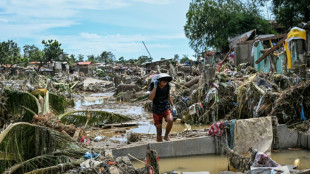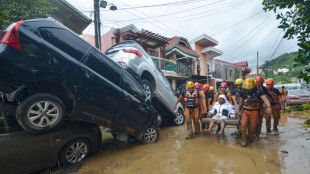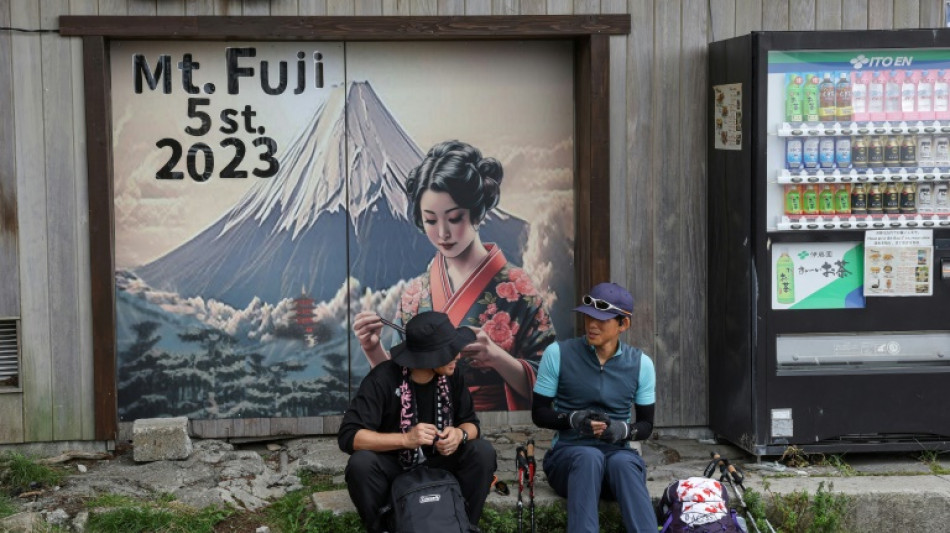
-
 Scandic Trust Group strengthens sales network with First Idea Consultant
Scandic Trust Group strengthens sales network with First Idea Consultant
-
France opt for Le Garrec as Dupont replacement for 'best team ever' South Africa

-
 Drugmaker AstraZeneca profit jumps as US business grows
Drugmaker AstraZeneca profit jumps as US business grows
-
'Vibe coding' named word of the year by Collins dictionary

-
 Vietnam evacuates thousands from coast ahead of Typhoon Kalmaegi
Vietnam evacuates thousands from coast ahead of Typhoon Kalmaegi
-
European stocks fall after gains in Asia, US
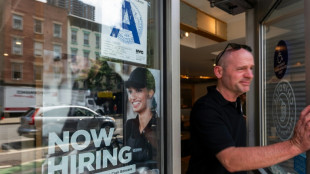
-
 MotoGP legend Agostini admires Marc Marquez's 'desire to win'
MotoGP legend Agostini admires Marc Marquez's 'desire to win'
-
Nepal searches for avalanche victims

-
 Hezbollah rejects any negotiations between Lebanon and Israel
Hezbollah rejects any negotiations between Lebanon and Israel
-
Chapman blitz leads Black Caps to tight T20 victory over West Indies

-
 France urges EU to sanction Shein platform
France urges EU to sanction Shein platform
-
France opt for Le Garrec as Dupont replacement for South Africa Test

-
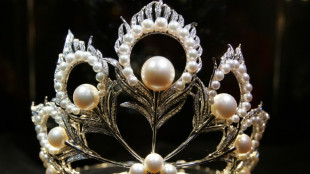 Turmoil in tiaras at Miss Universe pageant in Thailand
Turmoil in tiaras at Miss Universe pageant in Thailand
-
Probe into Thales defence group looking at Indonesian contract

-
 US to cancel flights as longest govt shutdown drags on
US to cancel flights as longest govt shutdown drags on
-
Home in Nigeria, ex-refugees find themselves in a war zone

-
 Doncic's Lakers hold off Wembanyama's Spurs, Blazers silence Thunder
Doncic's Lakers hold off Wembanyama's Spurs, Blazers silence Thunder
-
For Turkey's LGBTQ community, draft law sparks existential alarm

-
 Musk's $1 trillion pay package to face Tesla shareholder vote
Musk's $1 trillion pay package to face Tesla shareholder vote
-
Tonga rugby league star out of intensive care after seizure

-
 Argentine ex-president Kirchner goes on trial in new corruption case
Argentine ex-president Kirchner goes on trial in new corruption case
-
Dams, housing, pensions: Franco disinformation flourishes online

-
 Endo returns as Japan look to build on Brazil win
Endo returns as Japan look to build on Brazil win
-
Franco captivates young Spaniards 50 years after death

-
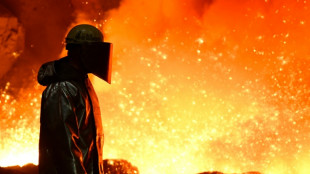 German steel industry girds for uncertain future
German steel industry girds for uncertain future
-
IPL champions Bengaluru could be sold for 'as much as $2 billion'

-
 Budget impasse threatens Belgium's ruling coalition
Budget impasse threatens Belgium's ruling coalition
-
New Zealand ex-top cop admits to having material showing child abuse, bestiality

-
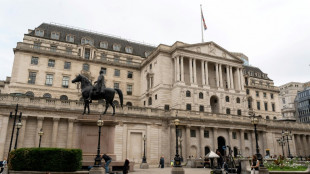 BoE set for finely balanced pre-budget rate call
BoE set for finely balanced pre-budget rate call
-
Australian kingpin obtains shorter sentence over drug charge

-
 Weatherald's unenviable Ashes task: fill giant hole at top left by Warner
Weatherald's unenviable Ashes task: fill giant hole at top left by Warner
-
Ovechkin first to score 900 NHL goals as Capitals beat Blues

-
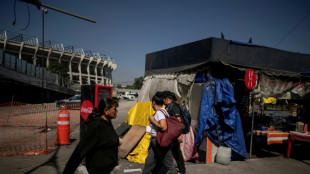 On Mexico City's streets, vendors fight to make it to World Cup
On Mexico City's streets, vendors fight to make it to World Cup
-
Asian markets bounce from selloff as US jobs beat forecasts
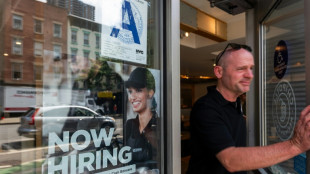
-
 Philippine death toll tops 140 as typhoon heads towards Vietnam
Philippine death toll tops 140 as typhoon heads towards Vietnam
-
Kyrgios targets 'miracle' Australian Open return after knee improves

-
 'AI president': Trump deepfakes glorify himself, trash rivals
'AI president': Trump deepfakes glorify himself, trash rivals
-
Belgium probes drone sightings after flights halted overnight
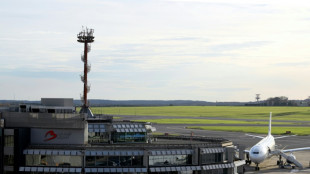
-
 Five things to know about 'forest COP' host city Belem
Five things to know about 'forest COP' host city Belem
-
World leaders to rally climate fight ahead of Amazon summit

-
 Engine fell off US cargo plane before deadly crash: officials
Engine fell off US cargo plane before deadly crash: officials
-
Mexican leader calls for tougher sexual harassment laws after attack

-
 Meghan Markle set for big screen return: reports
Meghan Markle set for big screen return: reports
-
Japan deploys troops after wave of deadly bear attacks
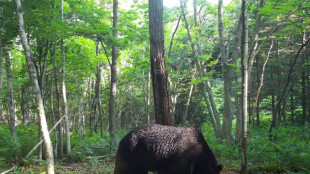
-
 Thermon Reports Second Quarter Fiscal 2026 Results
Thermon Reports Second Quarter Fiscal 2026 Results
-
Zomedica Achieves ISO 13485 Certification, Underscoring Strengthened Quality Infrastructure and Commercial Potential

-
 Jaguar Mining Reports Solid Third Quarter 2025 Financial Results Driven by Strong Gold Prices and Pilar Performance
Jaguar Mining Reports Solid Third Quarter 2025 Financial Results Driven by Strong Gold Prices and Pilar Performance
-
MainStreetChamber Holdings, Inc. Announces the National Launch of kathy ireland(R) Laundry's "Laundry Concierge" Program

-
 Stillwater Critical Minerals Provides Corporate Update
Stillwater Critical Minerals Provides Corporate Update
-
SlicedHealth Elevates Hospital Contract Intelligence with SlicedIQ


Japan's Mount Fuji 'screaming' from too many tourists
With its millions of visitors every year and the buses, supply trucks, noodle shops and fridge magnets, Japan's Mount Fuji is no longer the peaceful pilgrimage site it once was.
Now authorities have had enough, saying the number of hikers trekking up the world-famous volcano -- night and day -- is dangerous and an ecological embarrassment.
"Mount Fuji is screaming," the governor of the local region said last week.
Hailing its religious importance and its inspiration to artists, in 2013 UNESCO added the "internationally recognized icon of Japan" to its World Heritage List.
But as has happened in places such as Bruges in Belgium or Rio de Janeiro's Sugarloaf Mountain, the designation has been both a blessing and a curse.
Visitor numbers more than doubled between 2012 and 2019 to 5.1 million, and that's just for Yamanashi prefecture, the main starting point.
- Day and night -
It's not just during the day that a stream of people trudges through the black volcanic grit on their way up the 3,776-metre (12,388-foot) mountain.
At night, long lines of people -- on their way up to see the sun rise in the morning -- trek upwards with torches on their heads.
The main starting-off point is a car park that can only be reached by taxi or buses that take a couple of hours from Tokyo, around 100 kilometres (60 miles) away.
Greeting visitors is a complex of restaurants and shops selling souvenirs as well as snacks and drinks for walkers before they set off.
They are powered by diesel generators and the thousands of litres of water they use has to be brought up in lorries. Trucks also take all the rubbish down.
"I saw a lot of food waste and empty bottles of drinks lying around the hand-washing area of the toilet," complained Japanese hiker Yuzuki Uemura, 28.
- Dangers -
Masatake Izumi, a local official, said the high numbers of people increased the risk of accidents.
Some people who climb at night "get hypothermia and have to be taken back to first aid stations", he told AFP.
At least one person has died so far this season.
For an optional access fee of 1,000 yen ($6.80), visitors get a booklet in Japanese -- there is a QR code for the English version -- with some dos and don’ts.
But some don't realise how tough the five-to-six-hour climb is to the top, where oxygen levels are lower and where the weather can change quickly.
"It's almost winter up there, it's really cold," Rasyidah Hanan, a 30-year-old hiker from Malaysia, told AFP on her way down.
"People should be filtered a little bit because some people were not ready to climb Mount Fuji. They were like in really light clothes... Some of them really looked sick."
- Crowd control -
As tourist numbers get back to pre-pandemic levels, it's not only Mount Fuji whose returning crowds have authorities worried.
This week government ministers met to discuss measures to tackle what Kenji Hamamoto, a senior Japan Tourism Agency official, called "overcrowding and breaches of etiquette" across heavily touristed sites.
For Mount Fuji, authorities announced last month that they would impose crowd control measures for the first time if paths got too busy.
The announcement alone had an effect and in the end no such measures were taken, Izumi said.
Visitor numbers are expected to be down slightly this year from 2019, but in 2024 they could rise again as tourists -- particularly from China -- return.
Yamanashi's governor Kotaro Nagasaki said last week Japan needed to take measures to ensure Mount Fuji did not lose its UNESCO designation.
One solution, he said, could be constructing a light rail system to replace the main road leading to the main starting point for hikers.
"We firmly believe that with regard to Mount Fuji tourism, a shift from a quantity approach to a quality one is essential," Nagasaki said.
"I think that Mount Fuji is one of the things that makes Japan proud," said Marina Someya, 28, a Japanese hiker.
"There are a lot of people, and lots of foreigners."
O.Norris--AMWN
